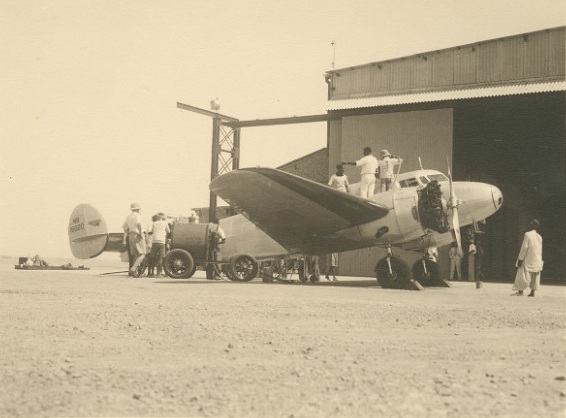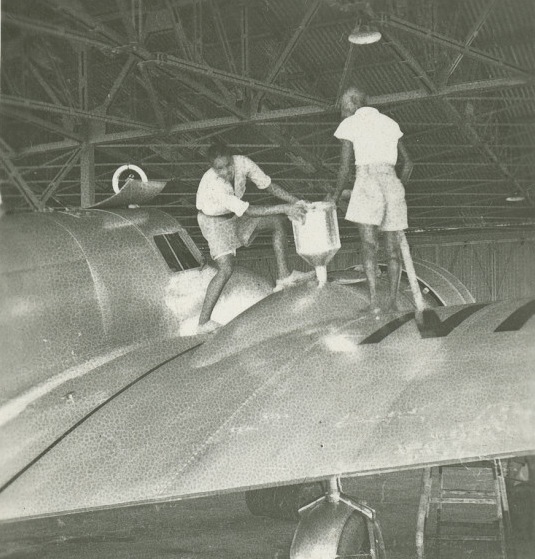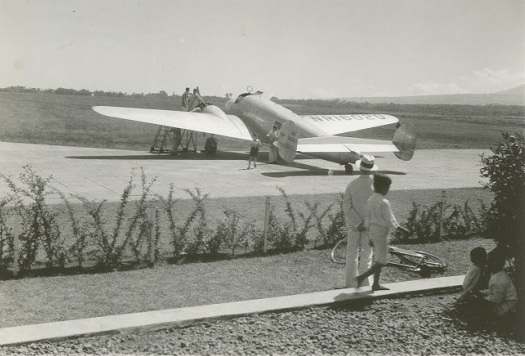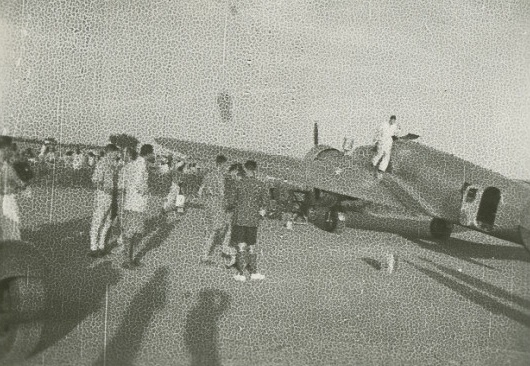

We left Assab early on the morning of the fifteenth, well before daylight. First we cut across a deep indentation on the Eritrean coast, and thence at an angle flew over the narrow southern entrance to the Red Sea called Bab-al-Mandah to the Arabian shore. That reached, we straightened out over the desolate southeastern tip of Arabia, checking over Aden after the sun was well up, one hundred and seventy-five miles on our way. . . Flying by foreigners over Arabia is not welcome. . . Finally the authorities relented. . . They gave permission to land at Aden, and permission to fly thence to Karachi, possibly stopping first at Gwadar, 350 miles up the coast at the mouth of the Persian gulf in Baluchistan close to the Persian border. It was stipulated that we were not to fly over Arabia itself but along the edge of the sea. So from Aden, as directed, I held a course along the coast. Sometimes the blue Arabian Sea was below. Sometimes clouds piled along the ocean’s edge forced us shoreward for brief stages. Flying high, we were able to see considerable of this forbidden and forbidding country. Surely some of the wastelands of the world bordered our route. One could scarcely imagine a more desolate region than that shore…Beyond Ras el Hadd, which is on the eastern end of Arabia, facing the Gulf of Oman, we cut across to Gwada, which we checked over at five o’clock. Thence we skirted the coast southeastward to Karachi, arriving at 7.05 P.M. I think our elapsed time for the 1,920 miles from Assab to Karachi was 13 hours and 10 minutes. . . .
—Amelia Earhart

© 2019, Bryan R. Swopes









